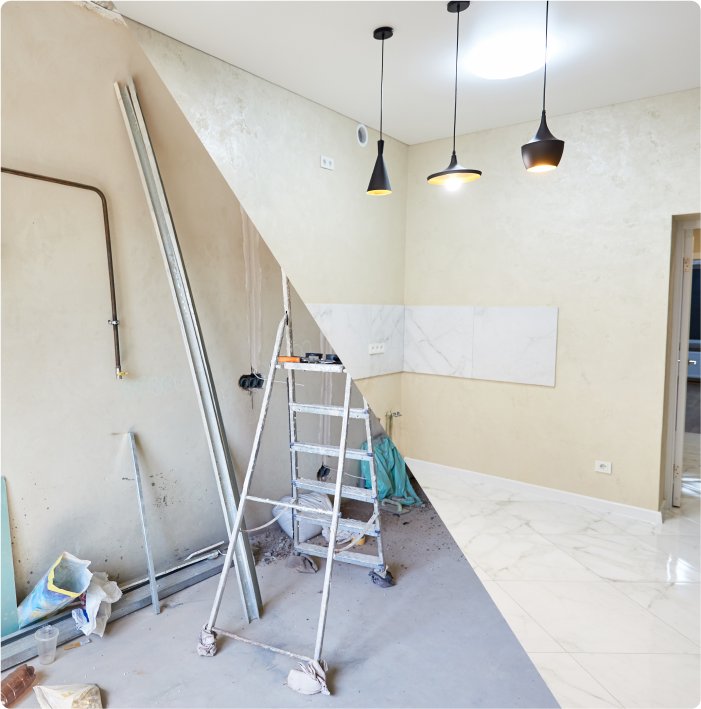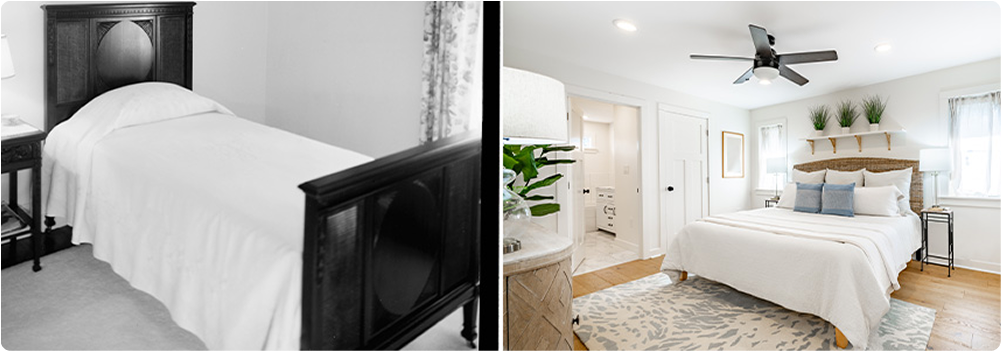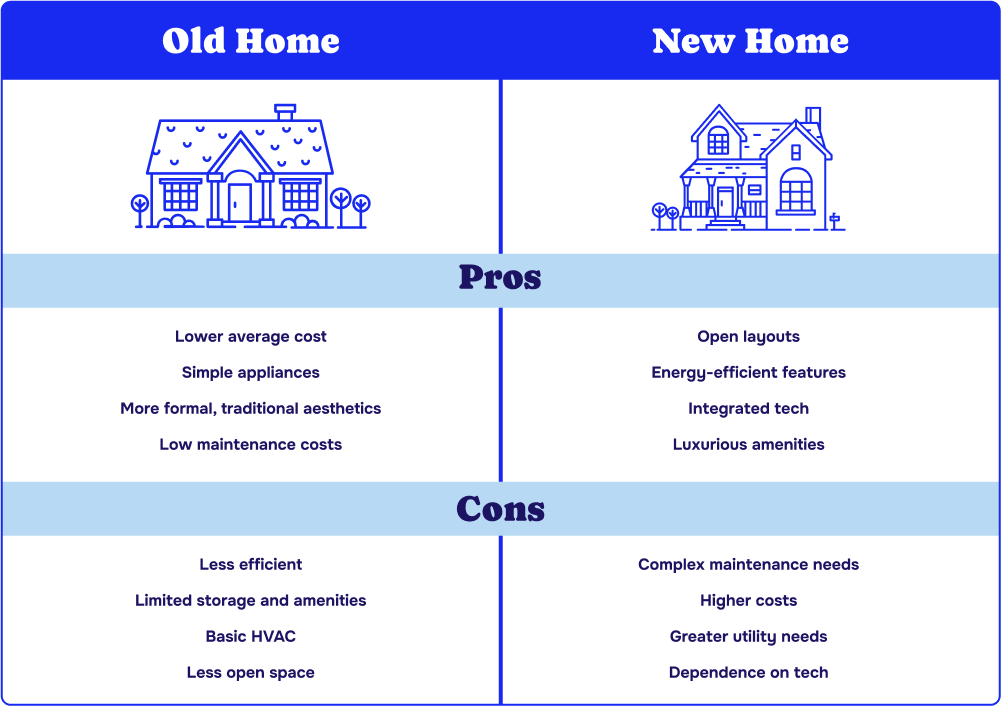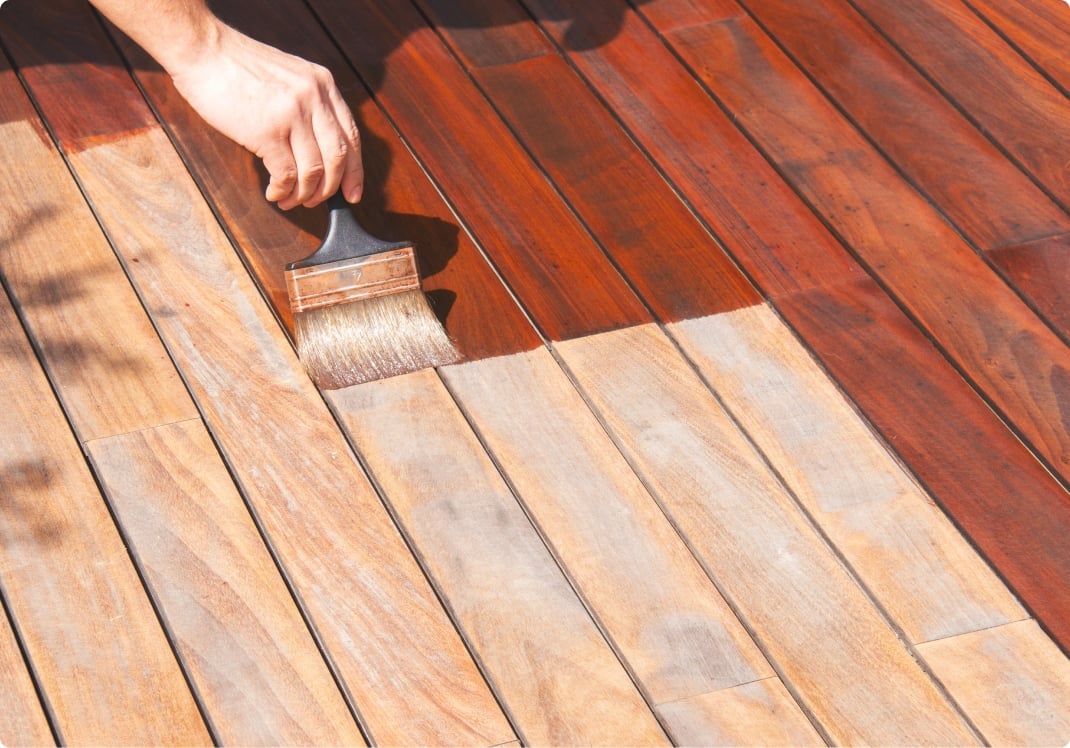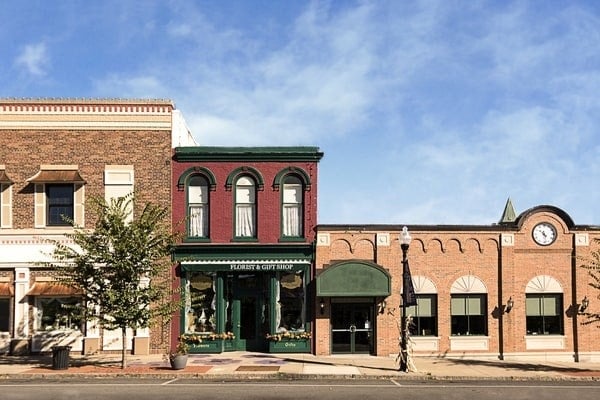The numbers tell the story
Since American Home Shield started in 1971, we’ve seen dramatic changes in how Americans live. And nowhere is that more reflected than in the cost of buying a house in the 70s vs. today. The average home prices in 1970 would make today’s house hunters weep with nostalgia. According to the U.S. Department of Housing and Urban Development, the average single-family home cost around $28,300 in 1971, or roughly $220,455 in 2025*.
And that’s not the only difference in buying a house in the 70s vs. today. Homes built in the 1970s were simpler and, at around 1,575 square feet, cozier, too. Nowadays? We’re living larger—new homes average 2,140 square feet of floor space, filled with the latest tech and a lot more room for activities.
Then and now, room by room
A lot has changed since the 70s, and nowhere is that clearer than in the very rooms where we cook, gather, relax, and unwind. Stroll through the decades and see how much time has made its mark from 1970s housing to today.
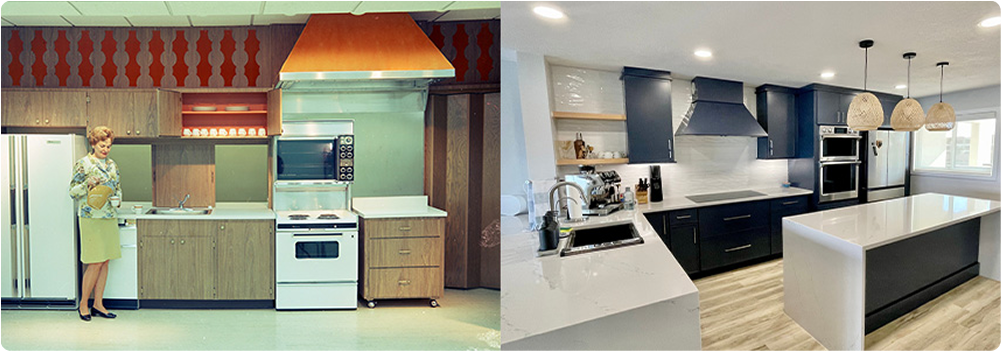
Seattle Municipal Archives, CC BY 2.0 <https://creativecommons.org/licenses/by/2.0>, via Wikimedia Commons
Kitchen: From closed-off workhorse to heart of the home
Back in 1971, kitchens were purely functional spaces, closed off from the rest of the house. Harvest gold appliances and laminate countertops were all the rage, with little space for anything beyond basic cooking and cleaning essentials.
Today’s kitchen is a complete 180—an open, airy hub that’s as much for entertaining as it is for meal prep. Smart refrigerators, whisper-quiet dishwashers, and islands that double as homework stations have turned the kitchen into the heart of the modern home.
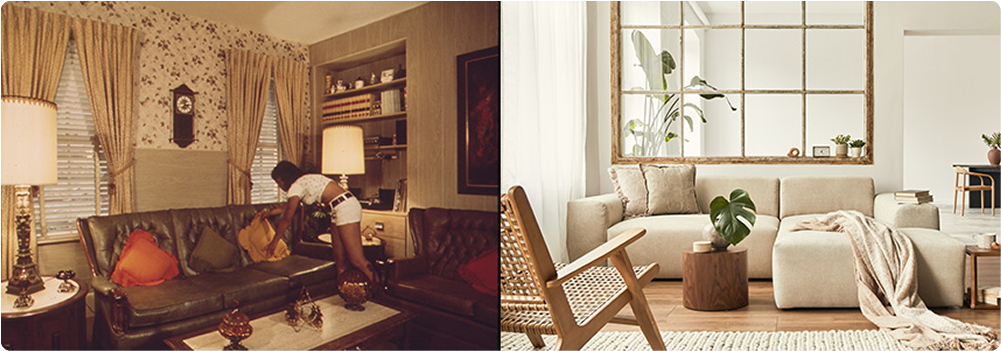
National Archives at College Park, Public domain, via Wikimedia Commons
The living room: From formal entertaining to relaxed, multi-use spaces
In the 1970s, living rooms were reserved for formal gatherings, with structured seating, a few ornamental touches, and maybe even a conversation pit if you were lucky. Furniture was often bulky, covered in brown or mustard hues, and TVs were big, boxy, and not always in this room, if you had one at all. Vinyl records and eight-tracks set the soundtrack.
Today’s living room is all about providing a space to be yourself. Sectional sofas, open layouts, and a lot more tech. We’ve traded formal decor for smart speakers, streaming options, and cozy furniture you can’t help but sink into. It’s where we relax, binge, and entertain. And if anything breaks, that’s what American Home Shield is here for, taking the stress out of surprise repairs so you can just keep chilling.
Bathroom: From bare essentials to spa-like retreats
A single, full bathroom was the standard in most 1970 housing, usually with colorful porcelain fixtures, electric towel warmers, and acrylic tubs. Minimal storage and a utilitarian vibe were the norm. Master bathrooms were rare, and most homes made do with just one or two modestly sized bathrooms.
Today’s bathrooms are an entirely different story. The average American home now features two and a half bathrooms, and they’ve also gotten a major upgrade in the ambiance department, too. Nowadays, primary bathrooms feature luxurious walk-in showers, double vanities, heated floors, and even smart toilets that can automatically flush and self-clean.
